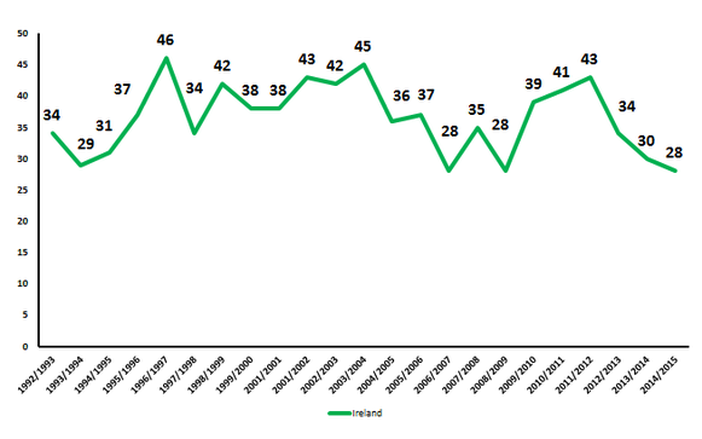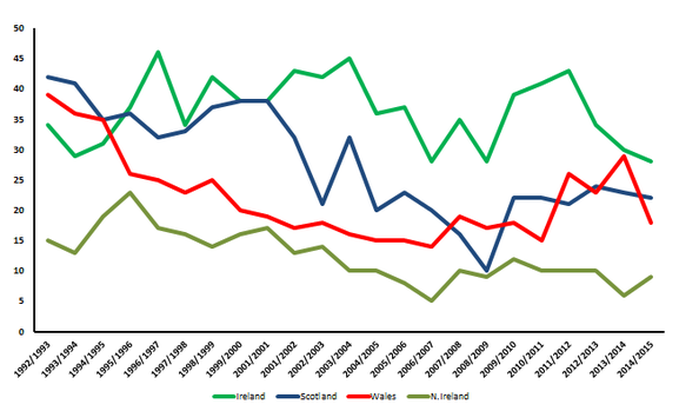Yesterday I had a general chat with Darren Frehill and Damien O'Meara on RTE’s Sunday Sport programme (starting at approx. 3.14) about the impact of the globalising labour markets (for Irish footballers) and inter-generational career trajectories (for Irish footballers). In addition, we spoke about Ireland’s Rugby World Cup bid.
On the former issue one question that arose was whether there are now less Irish players playing in the first tier of English football due to the internationalisation of the competition and the increasingly competitive labour market.
The points and charts below reveal some of the key information from 1992/1993 to 2014/2015 for Irish players in the Premier League.
- The most Irish players to be contracted to Premier League clubs in any one season was 46 in 1996/1997. The joint lowest amount was 28 (Fig 1.)
- The trend in the number of Irish in the Premier League is cyclical, spiking in the mid 90's, early 00's and early 10's.
- Since 1970 the pool of Irish International players has grown from approximately 34 in 1970 to 72 in 2015. This has increased the number of ‘top tier’ players absolutely, but not proportionally, since approximately 1985.
- The clubs these players are contracted to have altered, with far more Irish players now contracted to traditionally lower ranked clubs and generally participating in more loan moves during their career.
- Irish talent is still preferred to that of other British Isles countries. For the vast majority of the Premier League, there has been more Irish players in the Premier League when compared to Scots, Welsh and Northern Irish. Scotland and Wales both saw a downward trend in their numbers since 1992/1993. This has reversed since 2008/2009 for Scottish players and since 2010/2011 for the Welsh (Fig 2.)
Under the control of John Giles and Liam Tuohy the international team was largely compiled of Dublin born players. Eoin Hand changed this. Jack Charlton then became famous for actively courting and recruiting UK-born Irish by exploiting the ‘granny rule’ and making us more competitive internationally. As they say, the rest is history.


 RSS Feed
RSS Feed